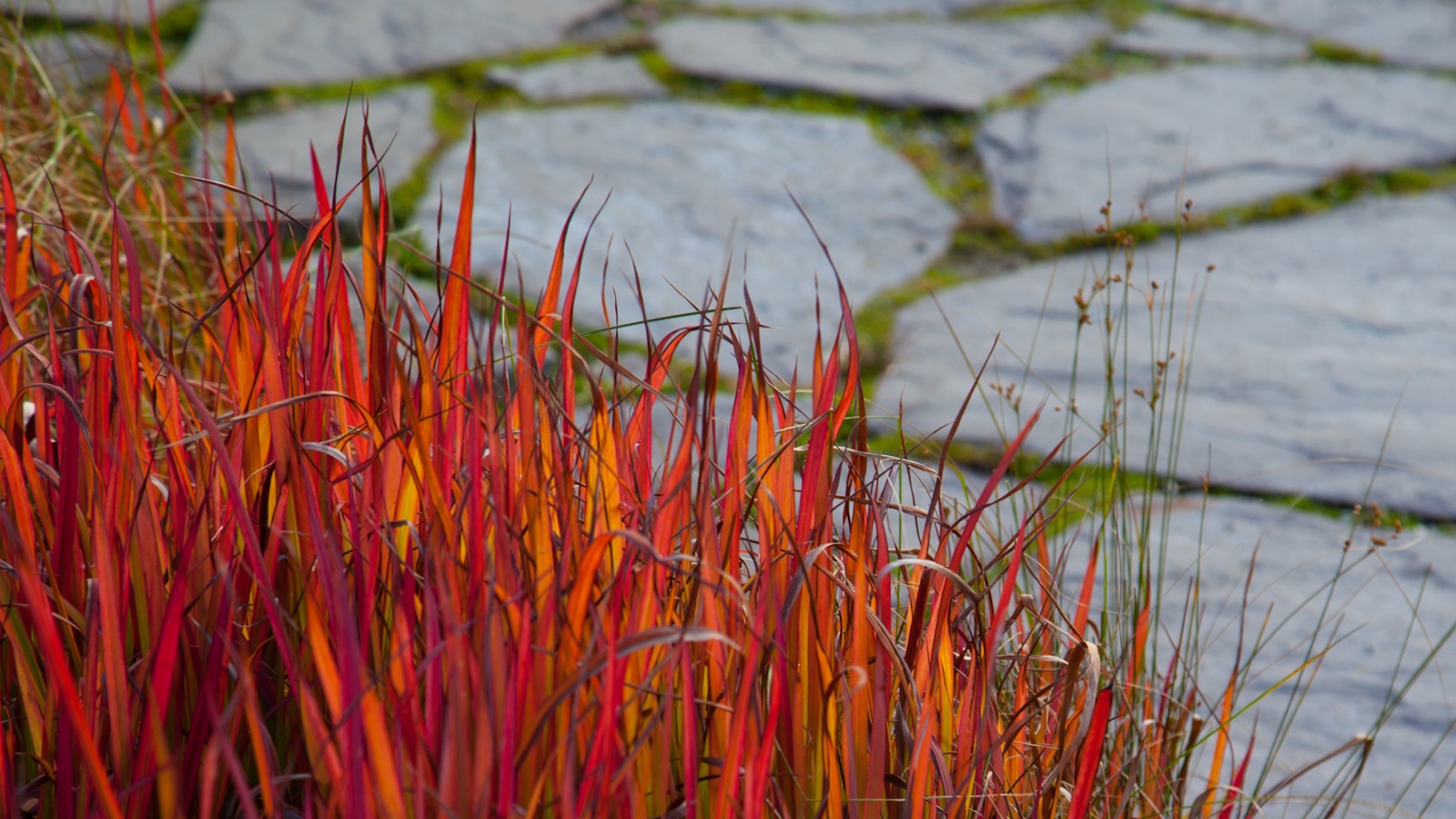
Ornamental grasses are practical but also impactful additions to any space. Whether you are looking for an attractive natural screen, height in your borders, or a pleasing foliage backdrop, grasses are the unsung heroes of the planting world.
One dramatic option is Japanese blood grass, Imperata cylindrica. Not only does this plant have an iconic name, but many varieties have unmatched crimson-red foliage that can add an interesting and unique accent to your yard. Be warned, however, that Japanese blood grass is a vigorous grower and is considered invasive in many regions. Always consult with your local government office before purchasing and planting.
Here, I share all the information you need to learn about how to grow Japanese blood grass. If you are looking for ornamental grasses for privacy, or perhaps something unusual to add to a pot display, this comprehensive guide will help you succeed.

How to grow Japanese blood grass
Belonging to the Poaceae plant family - the grass family - Japanese blood grass is native to tropical and subtropical regions in Asia, Africa and Europe. Growing to a height of two to three feet, these perennials are ideal plants for privacy, helping to create a natural screen from neighboring properties.
Things to consider about Japanese blood grass

'Japanese blood grass is an easy-to-grow ornamental grass that has spectacular foliage color,' says Drew Swainston, former professional gardener and gardens content editor at Homes & Gardens. 'Depending on the variety you grow, you can expect a late-season display of crimson-red or lush green from July through to October.'
'Most Japanese blood grass species can be grown from US hardiness zone 5 to US hardiness zone 9, making this a tough and resilient ornamental grass that most gardeners can plant,' Drew continues.
It is also a useful option if your yard is visited by unwelcome and unwanted pests. For example, Japanese blood grass can be grown as a deer-resistant ground cover.
However, as mentioned above, Japanese blood grass is considered an invasive plant in some regions and can crowd out other plants in borders and beds.
'It is always best to do your homework before adding any vigorous plants to your collection,' Drew says. 'Japanese blood grass can be particularly dominant in deep shade, so unless you are prepared to regularly care for and maintain this plant, it might be a better option to restrict its growth by planting in pots and containers.'
There are many different species and varieties of Japanese blood grass that can be found in a range of colors. One option with unmatched foliage is the 'Red Baron' variety, with live plants available to order from Amazon, showcasing deep red shades through summer and fall.
With unique foliage, Japanese blood grass will add impact to any yard. These live plants will quickly grow into sizeable clumps.
Growing advice for Japanese blood grass

- Soil: Japanese blood grass will thrive in most soil conditions, even tolerating sandy soils in coastal gardens. However, for the best results, they have a preference for moist but well-drained soils.
- Light: For the best results, grow in full sun. Remember that these plants are native to warm regions in the tropics, so giving these grasses at least six to eight hours of sun each day will help them to thrive.
- Watering: Most Japanese blood grass varieties have a preference for moisture and so would do well when planted at the edge of a rain garden. However, they can grow in dry gardens too, and are notable for their drought tolerance. If your plant is grown in a pot, be sure to water through the summer when temperatures are high. If your grass has browning or wilted foliage, it is a sign of heat stress, so regular deep watering will help.
- Fertilizing: It is not necessary to feed Japanese blood grass. These vigorous plants will grow just fine without any additional fertilizer. Feeding your plants when it is not needed is a common fertilizing mistake to avoid.
- Pruning: Japanese blood grass plants produce a spectacular display of fall and winter color, so it is best to leave pruning until late winter or early spring before new growth emerges. Use clean, sharp tools, like these Felco snips, available from Walmart, cutting down to the base of the plant.
With unique and colorful designs, these gardening gloves are practical and attractive to help with all your digging and pruning chores.
FAQs
How should I thin Japanese blood grass to stop it from spreading?
Regular maintenance will keep your Japanese blood grass under control. This plant thrives in cool, moist positions, and can take over in shady corners of the yard. For this reason, it is a good idea to thin your plant either in the spring or fall, when the plant is in good health and growing.
Simply lift and divide your plants using a garden spade, available from Walmart, slicing the clump into quarters. You can then dispose of the unwanted clumps (do not add to your compost heap) in a green waste refuse collection, and replant one new smaller clump. Regularly dividing your plants will help to manage their growth.
Japanese blood grass has a reputation for its invasive tendencies, but growing it in containers is a great way to enjoy these vigorous plants while at the same time restricting their spread. Consider pairing your grasses with tall perennials, such as agapanthus or hummingbird mint, for impactful and structural pot displays this year.







